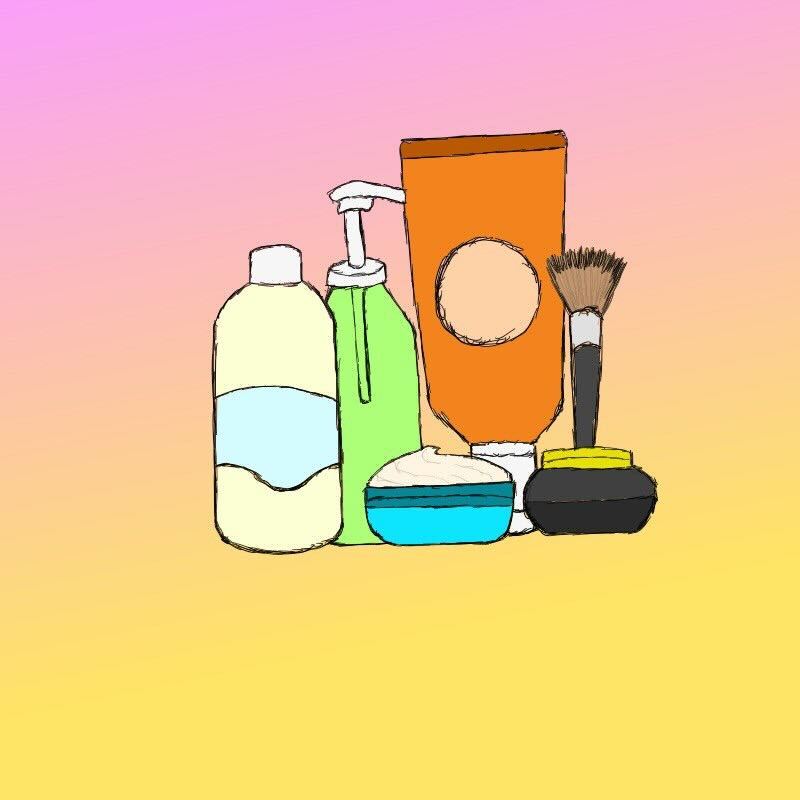Beauty products and self-care activities are not exclusive to women — although they’re depicted as such by social media and strategic marketing tactics. Self-care can range from exercising to getting enough sleep to practicing good hygiene. It is anything you do to take care of yourself so you can stay mentally, physically and emotionally well.
One personal hygiene habit that we may often neglect or forget about when speaking on the topic of self-care is skincare. That could be due to the gender gaps in the perception and practice of good personal hygiene. Many of us have at some point seen TikToks of girls “rating men’s bathrooms” either at a frat party or at a hookup’s house. Many of them look grimy, and there’s typically some sort of bottle for body wash that also doubles as shampoo, conditioner and face wash. Now, this is obviously not to say that all men are gross and don’t clean themselves properly, but there is a stigma around men and their use of hygiene products. And those products are ones that everybody should use.
The beauty industry is dominated by products that are specifically marketed to women. A select few lines are targeted at men or are advertised as gender-neutral. The thing is, it doesn’t really matter what your gender is — skin is skin. Whether you use the “manly” lotion or the pretty pink one that smells like flowers, it’s going to moisturize you just the same. The ingredients on both bottles are almost identical — with the exception of ingredients that go towards the creation of certain scents.
While the idea of beauty products being gender-neutral has become more mainstream and normalized in the past few years — primarily due to social media and trends like the “do you feel bonita” sound on TikTok — there is still a big gender difference in product marketing and target audiences. A lot of this has to do with packaging. While women are the main target audience for beauty products, it wouldn’t hurt for men to also buy and try them out and ignore the package’s appearance. If anything, it could even benefit them. Ingredients in beauty products in the past few years — especially skincare — are super innovative, well-researched and tested.
Take Glow Recipe, for example. It was founded in 2014 by co-CEOs Christine Chang and Sarah Lee and is now one of the most talked about skincare brands, with an estimated $100 million in sales. If you’ve ever gone to a Sephora, you have definitely seen their products — you might’ve even seen them on TikTok or YouTube. Their pretty and colorful packaging really sets them apart from other brands. At first glance, you can tell that this is something that is clearly primarily catered towards women. However, their products are in fact for everyone. YouTuber James Welsh loves and swears by many of Glow Recipe’s products. If you look beyond their cutesy packaging, they actually help target many skin concerns such as breakouts and acne, fine lines and wrinkles, dark spots and hyperpigmentation and dryness. These are not women-exclusive problems. This is all to say that if you look beyond the hyper-feminine packaging, you may find yourself really liking the product.
This pretty packaging thing also isn’t exclusive to Glow Recipe, I am simply using them as an example since they’re well known and recognized by their packaging. The same argument could also be made for brands like Tatcha, Drunk Elephant or iNNBEAUTY PROJECT. Pretty looking? Yes. Great ingredients that help target a wide variety of skin concerns experienced by all genders? Also yes.
This is not to say that quality skincare products only come in cute, girly packaging. There are plenty of brands that make their products look very plain and basic such as The Inkey List, Paula’s Choice and Skin Ceuticals.
These examples are to show that if we all just got over the presumed gendered perceptions we have for inanimate objects, we would be able to try more things and enjoy ourselves more. Why should anyone have to close themselves off to certain products just because it’s marketed to the opposite gender? I think most people would feel more confident if their skin felt smooth and their body soft and moisturized. It’s simply a nice feeling.
Breaking down these gendered product barriers can also help eliminate companies’ use of the pink tax. The pink tax refers to the gender-based price discrimination that was originally used to describe the price markup of feminine hygiene products, but its meaning has since expanded. Now it simply refers to charging women more than men for products and services that are essentially the same — just that one is marketed towards women, hence, pink tax, and the other for men. If we no longer judged beauty products based on their appearances, it would render the pink tax basically meaningless. Also, your options for body or face products have just expanded. Your choices are limitless.
Kelly Xiong writes about all things fashion, beauty, and personal health. You can write to her at jux13@pitt.edu


